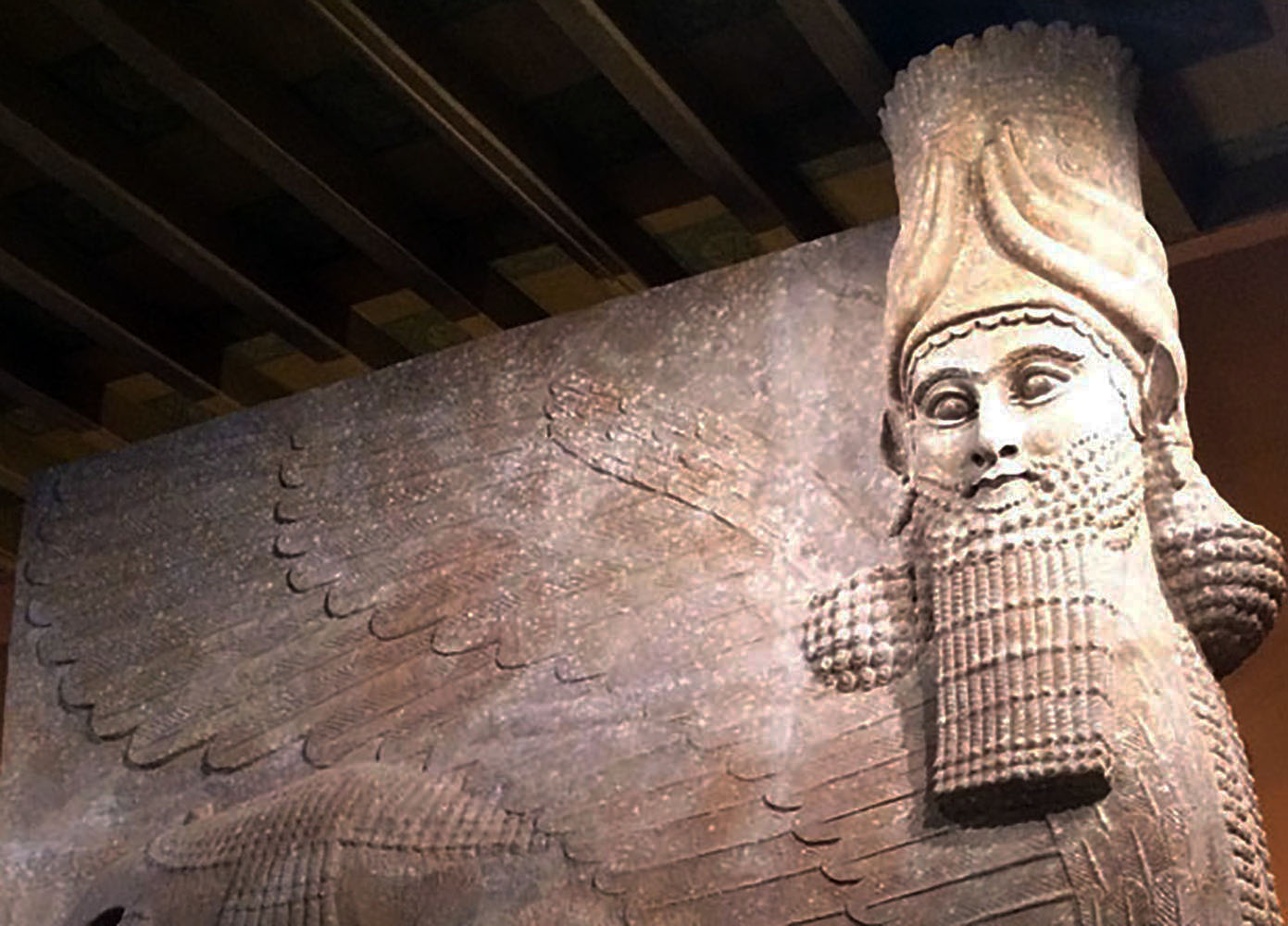By Ramsen Shamon
The Islamic State, or ISIS, is using everything from sledgehammers to bulldozers to rewrite Iraq’s cultural history, a priceless legacy of art and archaeology that they consider inappropriate according to their interpretation of the Quran.
A recent video released by ISIS showcases their destruction of historical objects in Mosul’s museum, some dating back to as early as the 7th century B.C. According to Iraq’s Ministry of Tourism and Antiquities, ISIS bulldozed the ancient site of Nimrud, a capital of the Assyrian Empire in the 800s B.C.
“The grass around the Lamassu is too green for July-August. [Their video] had to be [filmed] during the winter” there, said Christopher Jones, an ancient Near Eastern history doctoral student at Columbia University in New York City.
It is unclear when the video was published. Some believe the video was recorded last summer, but others disagree.
In the video, a power tool mutilates the millennium-year-old face of the Lamassu, or Assyrian winged bull. The militants said they associate the pieces of art with polytheistic worship.
Jones, although concerned with what occurred to the artifacts at the hands of ISIS, believes that human lives are more valuable than ancient art.
“I’m more concerned about people getting massacred, raped, beheaded, [and] burned alive by ISIS than I am about the antiquities. Those are the people I want protected before anything is done to save the archaeology,” he said.
MEMRI, a nonprofit organization based in Washington, D.C., translated the video released by the Islamic State into English from Arabic.
“The Prophet Mohammad commanded us to shatter and destroy statutes. Since Allah commanded us to shatter and destroy these statues, idols, and remains, it is easy for us to obey, and we do not care (what people think), even if this costs billions of dollars,” the unidentified man said in the video.
The United Nation’s cultural agency UNESCO has accused ISIS of selling Iraq’s ancient artifacts on the black market as a way to fund itself, according to Newsweek.
Diana Zaya Passarelli, a Crystal Lake mother who works in hospitality, said she is concerned not only about the ancient art but also about the minorities in the region.
Her Assyrian relatives were kidnapped by ISIS in Syria’s Khabour region, but were recently released, she said.
“Every link to our history is being demolished. Yet nobody does anything,” she said. “We have no ownership over [our art]. It is heartbreaking to see it be destroyed. We’re going extinct.”
Iraq’s antiquities are on display in museums across the globe. One institution that houses a large number of Near Eastern arts is the University of Chicago’s Oriental Institute Museum. The museum has more than 300,000 objects in its collection, and also has a designated Assyrian gallery.

“These barbaric and cowardly acts of book burning from Mosul’s libraries, followed by the vandalism of the monumental statues from Hatra and Nineveh, seek to glorify the destruction of these objects as so-called idols, but in reality, ISIL seek to eradicate knowledge of the past of Iraq’s people and the heritage of the world,” said Jack Green, chief curator of the University of Chicago’s Oriental Institute Museum. “Without the past, we cannot understand our present, and without understanding our present, we cannot then plan for our future. It is the heritage of the world and part of the history of civilization.”
Green’s sentiments reverberated through the art world.
“Speaking with great sadness on behalf of the Metropolitan, a museum whose collection proudly protects and displays the arts of ancient and Islamic Mesopotamia, we strongly condemn this act of catastrophic destruction to one of the most important museums in the Middle East,” Thomas P. Campbell, director of New York City’s Metropolitan Museum of Art, wrote in an email.

The Association of Art Museum Directors, Archaeological Institute of America, Society for American Archaeology, and the American Schools of Oriental Research issued a joint statement in February: “Pillaging of archaeological sites and cultural repositories to destroy irreplaceable cultural heritage and to disperse rare and important artifacts is reprehensible. This has caused irreparable damage to the heritage of the people of Iraq and humanity worldwide.”
Another Assyrian in Chicago said that breaking a culture’s art, as terrible as that is, still cannot break a people’s spirit.
“If history is any indicator of humanity’s relentless will to persevere, then we shall prevail even from this recent situation,” said Paul Khio, an order manager at a photography company.




